From Pasture To Plate
The journey of locally grown, healthy meat into retail stores isn’t an easy one, but it’s one that is bringing physical and financial health to its producers, retailers and consumers.
Brandon Hix ordered the chopped brisket sandwich with a side of fries. He found a table inside Heritage Butchery & BBQ restaurant off Highway 75 in Denison, Texas, and sat with the floor-to-ceiling windows streaming in brilliant white light over his right shoulder.
In a few minutes the food arrived, carrying with it an appetizing aroma capable of making every hungry head turn. Hot, tender shredded beef had been piled high in the center of the hamburger buns. Hix poured a thick, pungent sauce over the bulk of the meat.
“What’s the sauce you’re putting on that?” I set the voice recorder on the table between us.
“It’s just a barbecue sauce.” Hix patted the bun back on top. “I hope it’s good. I already put it on there.” He took a bite, and his eyes, the same blue of that big Texas sky outside, gave his approval. “Yeah, it’s good. Smokey.”
This wasn’t a special lunch, just a typical Thursday in the life of a U.S. Citizenship and Immigration Services officer with 11 mouths to feed every night. When he finishes his sandwich, he’ll head to a nearby school to pick up his kids. Then he’ll head home, back to his afternoon responsibilities, then his evening responsibilities, and finally to bed, only to wake in the morning to do it all over again.
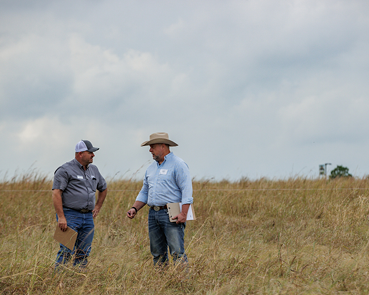
Make a positive impact on your land, your livestock and your livelihood.
Take action now towards a more sustainable and more profitable future.
His family is no different than the majority of families in America. In all the doings and goings of life, he wants them safe, happy and healthy, which is dependent on the quality of the food supply he can afford.
“When we first realized we wanted to eat cleaner meat,” said Hix, enthusiastically diving into his sandwich now, “it was difficult financially because you’re obviously going to pay a little more.”
At the time his family made this eating shift, locally raised, hormone-free, rotationally grazed, grass-finished meat wasn’t easy to find. But they had to find it anyway. His wife was suffering from food allergies. He was suffering from lethargy. His kids — 4, 8, 9, 12, and a teenager — needed clean food that would contribute to their growth, not inhibit it. And that didn’t account for the needs of the other people living in and out of the Hix home, like their two foster children, a grown niece, and his sister and her four kids.
Everyone needed cleaner, healthier meat options. And they needed to be local. And easy to access. And somewhat convenient. And fit their budget.
It wasn’t a want; it was a need. This had to happen. But how was that even possible?
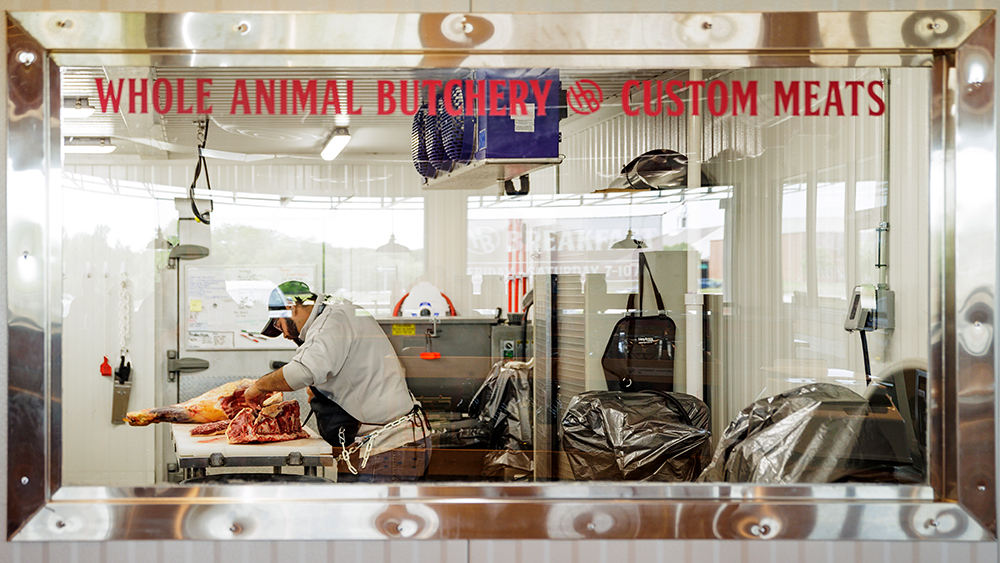
Demand Creates Supply
Pete Gonzales can feel the emotions every animal on his table experienced in their lifetime. Literally. He can feel them.
Even after they’ve been processed, even chilled and on his butcher slab in a 40-degree room, even then, he knows how the ranchers cared for their livestock. It’s in the tough or tight fibers, and the blood spots, and fat percentage.
It’s all there. All under his hands.
Gonzales stands to the right of the cutting table armed with only his apron and his professional butcher knives. Then the ballet begins. Each cut is precise. Every part of that animal is used.
“We try to use every part of the animal. Any of the fat we pull off, we set aside and render. Instead of using butter on our bread, we use beef tallow that we’ve rendered down,” says Gonzales, giving an example of how his restaurant and butchery work together. “Another thing we like to do is make our own bologna. We make our own hams, utilizing the full animal and its full aspects.”
I want you to know where your beef is coming from. I want you to know that rancher. That’s really what drove this whole concept.
Pete Gonzales
As a full carcass butchery, he’s bringing the old-school classic cuts — like the seven-bone chuck roast — back to dinner time. But that’s not the only thing that makes him unique. Gonzalez is bringing the best of the best, the clean meats from animals raised on healthy soil principles, to his consumers.
“We take extra care,” says Gonzales, mentioning the time he spends creating what he calls a “better mouth feel” for his customers. “And our ranchers take extra care.”
He opened Heritage Butchery & BBQ in November 2022, as a way to meet a need: connecting locally raised regenerative meats to discerning consumers. Whether they seek these clean meat sources to support the environment, support the local ranches, or support their health, like the Hix family, his typical customers are dissatisfied with the selections offered by mass supermarkets. They want to put a face and name to the person raising their food supply, which is one reason Gonzalez has informative wall displays that tell about the ranches that supply his restaurant and butchery.
“I want you to know where your beef is coming from. I want you to know that rancher,” says Gonzales, nodding to the wall displays. “That’s why we have pictures and names of the ranch on our walls. There’s Noble’s right there.” He motions to the wall near the soda foundation and then the one at the entrance.
“When you walk in, you’ve got Freedom Acres. We’re not hiding anything. We want you to know where things are coming from, where you’re getting your beef.”
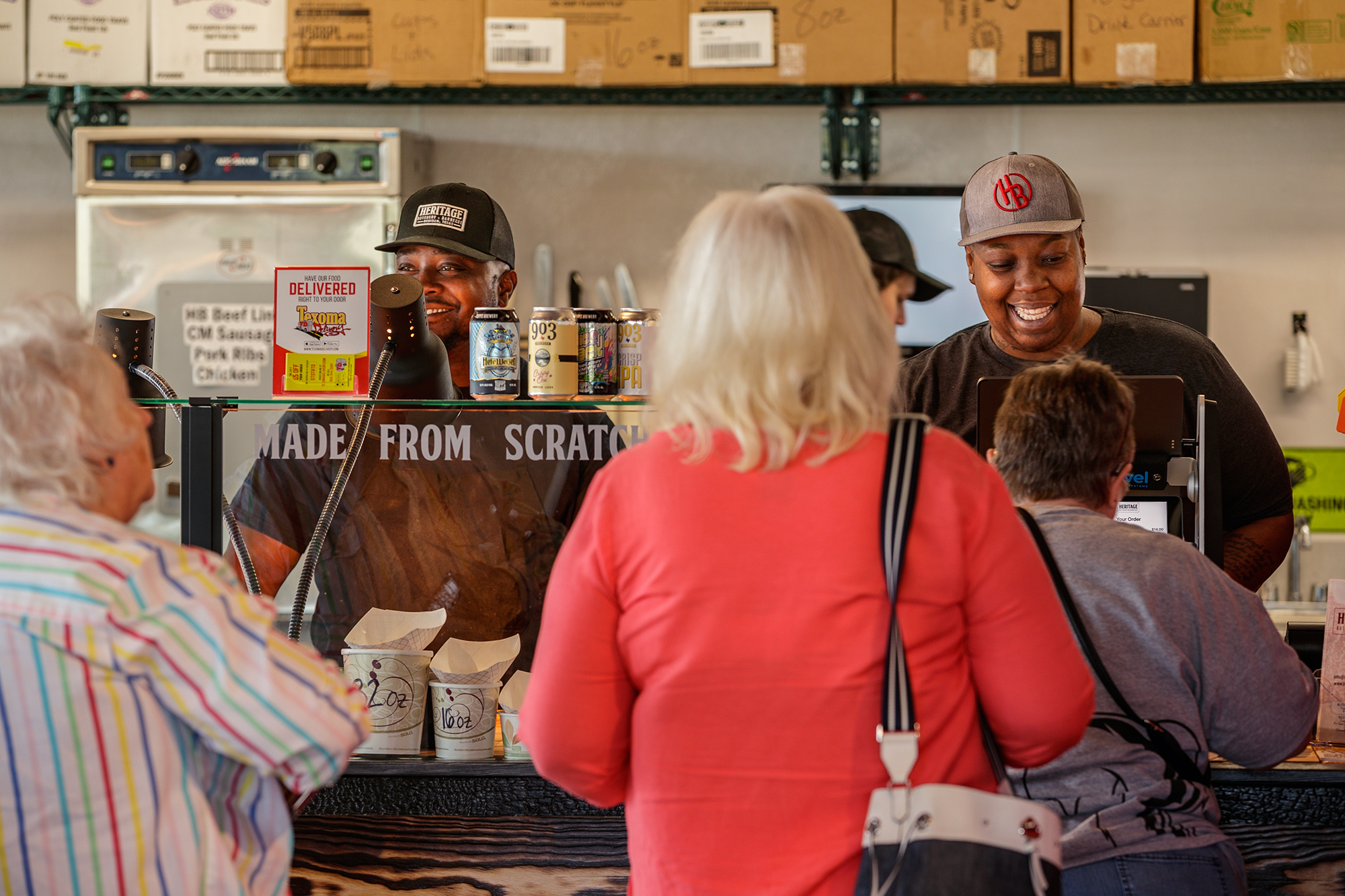
The Intimate Rancher/Consumer Relationship
The meat in Brandon Hix’s shredded brisket sandwich came from Hartley Ranch in north-central Texas. The eggs in the butchery shop come from Chuck Trowbridge’s Prairie Farmstead in nearby Sherman. If Hix had ordered the pulled pork, the meat would have been from Prairie Farmstead or Matt Cadman’s Shady Grove Ranch in Jefferson, Texas. If Hix had purchased lamb from the butcher shop, it would have come from the regenerative fields of Noble’s Red River Ranch near Burneyville, Oklahoma.
Heritage Butchery & BBQ restaurant creates a clean line from the pasture to the plate for consumers. They know exactly where the meat came from, who raised it, where they raised it, how they raised it, instead of reading generic labels at the supermarket that may or may not accurately represent the product.
“That’s really what drove this whole concept,” says Gonzales, referring to the motivation behind his butchery and restaurant. “Why are we getting our beef from just anyone? Or from places we don’t know? Here, I have a relationship with all my ranchers. If I want to see them, I go see them. I can call them up and say, ‘Hey, I’ve got customers that want to visit your ranch. Can we come out next week?’ And they say, ‘One hundred percent, yes. Bring them.’’
Customers not only know where their meat comes from, they can see how those animals react to the rancher. This not only speaks to the care those animals receive, but it also gives insight to the quality and flavor of the meat, once harvested.
“When you step out of that truck, you want to see how these animals react to the rancher to know how they’re taking care of them,” says Gonzales, who seeks out quality in every stage of food production to guarantee that tender “mouth feel.” “When the rancher pulls up, I want the cows to come greet them. I want them to be happy to see them. I want them to be able to walk up and the animals don’t get in defense mode, which tells me there’s some negative things going on.”
At left, cuts of local regeneratively raised beef are on display in a butcher case at Heritage Butchery & BBQ. At right, market customers shop for meat, eggs and other items labeled with names of the local farm or ranch of origin.
Quality Tastes Best
Not every Heritage consumer needs to meet the rancher face-to-face. Some simply come because the food tastes better, but many, like Hix, have transitioned to healthy eating and will never go back.
“It feels good to know that I’m feeding my family clean meat. I didn’t realize how important that would be until we started doing it. Now I know I’m giving my kids the best diet.”
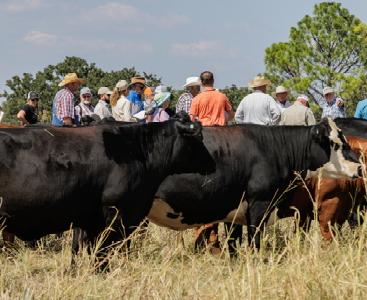
Make a positive impact on your land, your livestock and your livelihood.
Take action now towards a more sustainable and more profitable future.
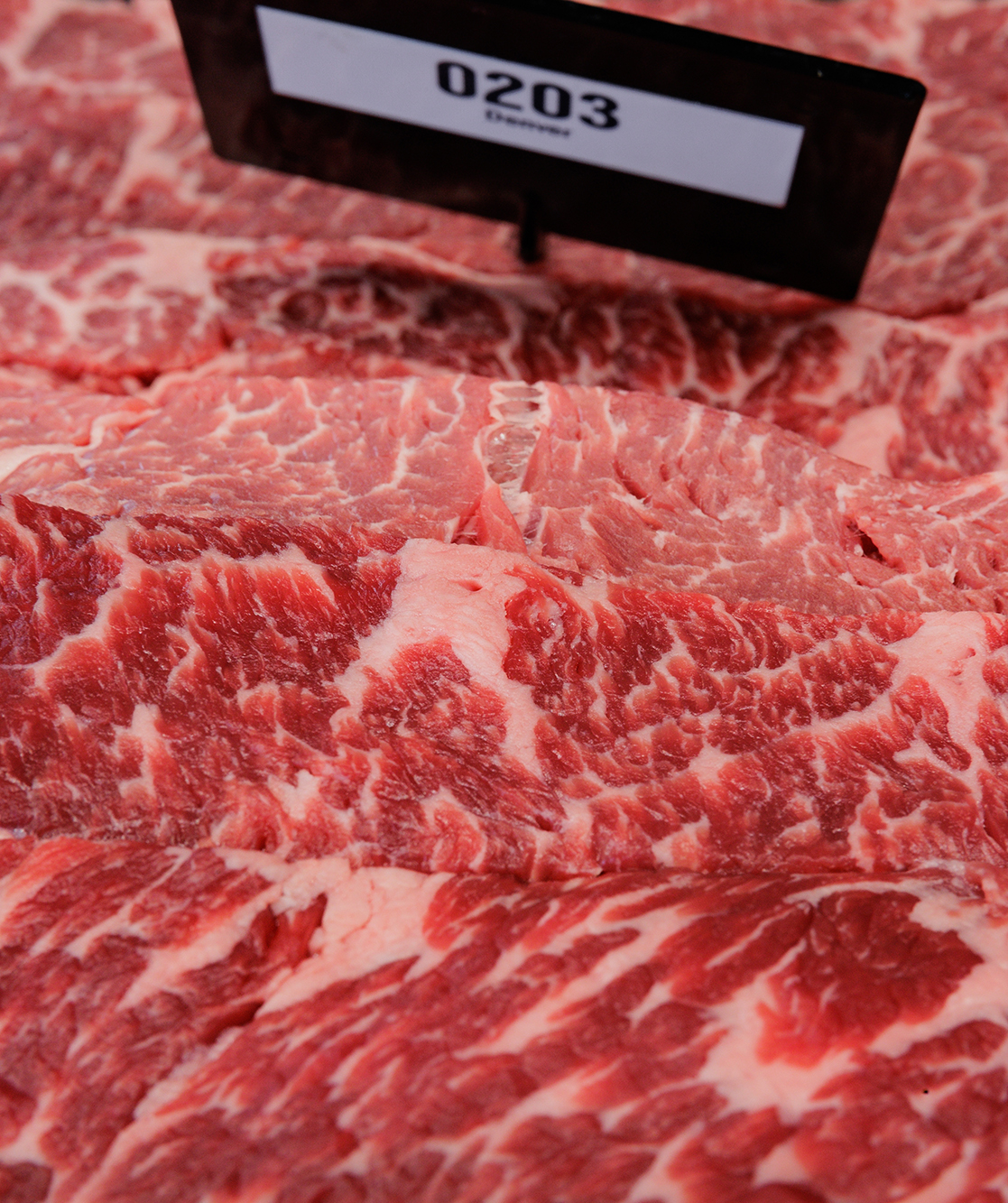
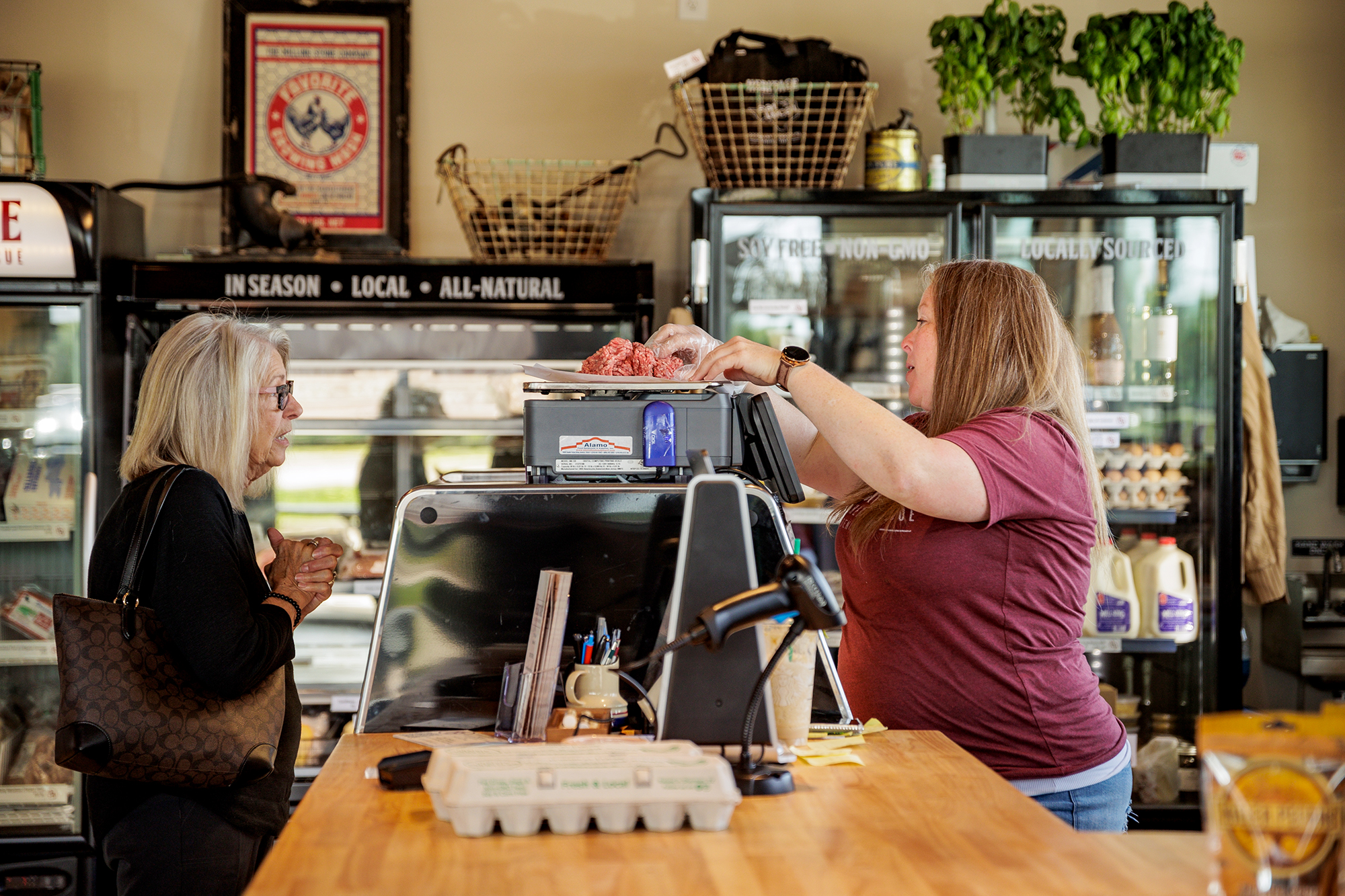

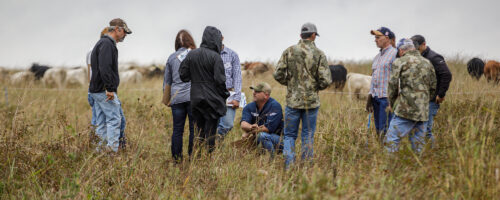
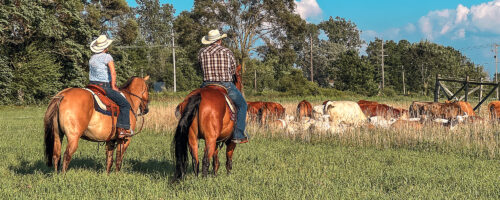
Comment